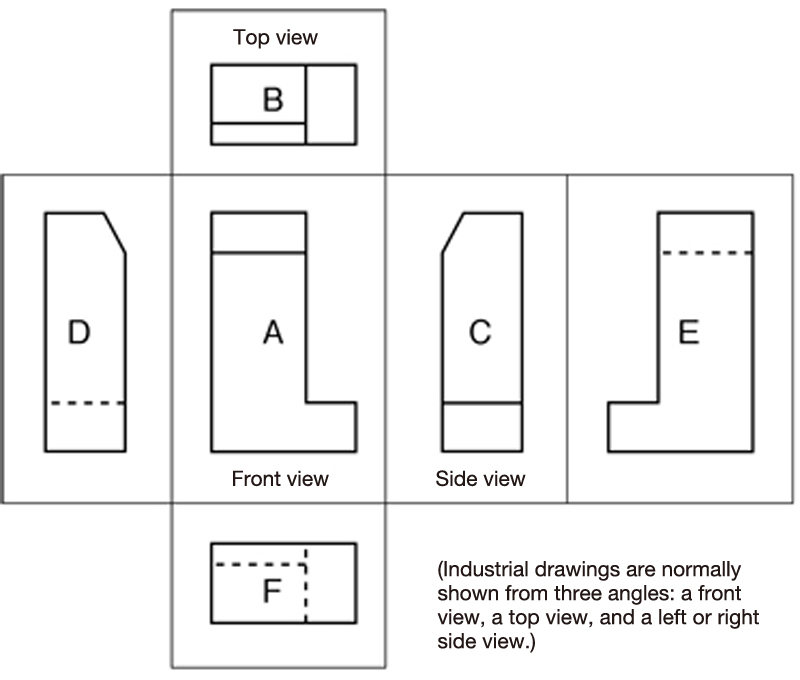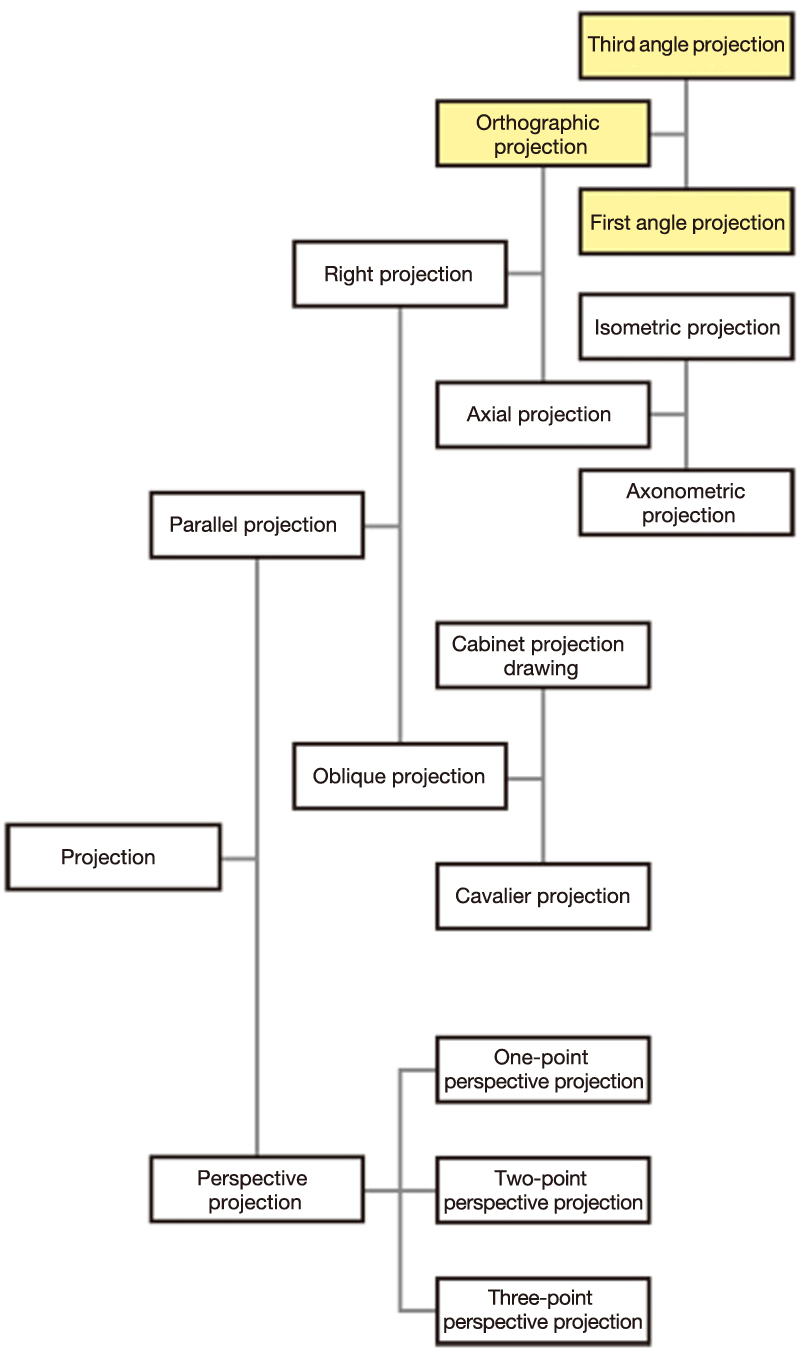Orthographic Projection
正投影図法
Seitoueizuhou
CATEGORIES
Projection methods are broadly divided into perspective and parallel projection. Projection is a means of representing a three-dimensional object in two dimensions and orthographic projection is a form of parallel projection. A feature of orthographic projection is that it is a multiview projection (expression by two or more projection planes) in which an object can be displayed in up to six views: front, top, right side, left side, rear and bottom. Using orthographic projection in drafting seems inconvenient because of the need for multiple views but it is advantageous in that it allows us to accurately show the shape of the object, i.e., its height, width and depth. For that reason, designs for manufacturing products, etc. are generally drafted using the orthographic projection method. However, because it is better in practical terms to have only the minimum number of views needed to see the shape of the object, in many cases only three views are used: front, top and side (left or right). Within the expression of orthographic projection, we have third angle and first angle projection. However, JIS (Japan Industrial Standards) stipulates that industrial designs generally be expressed by third angle projection.

 Third angle projection
Third angle projection Projection systems
Projection systems
